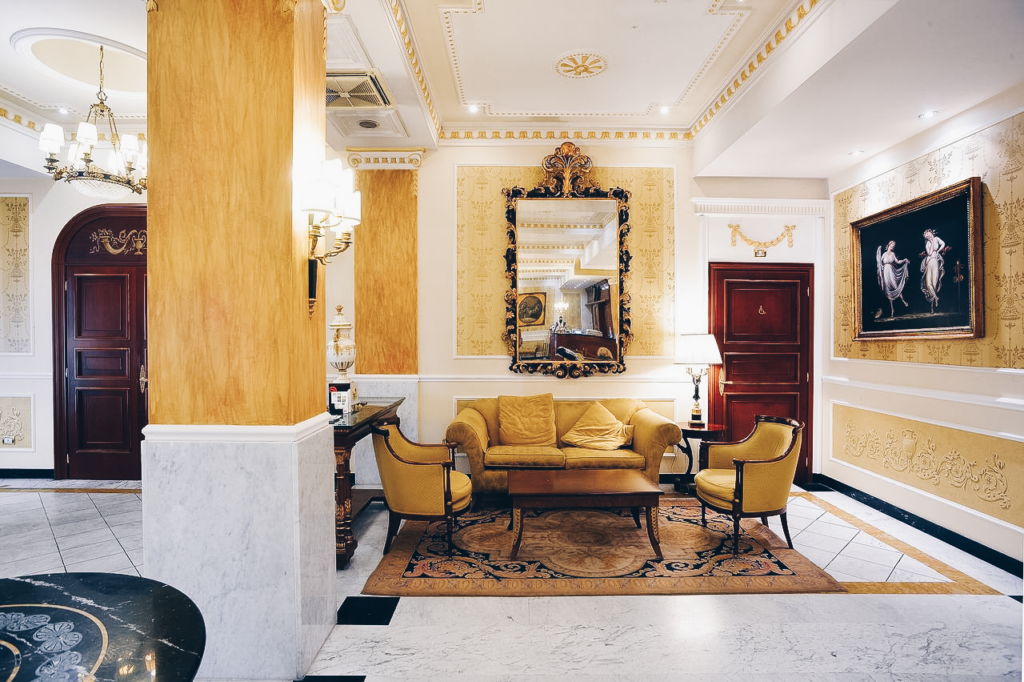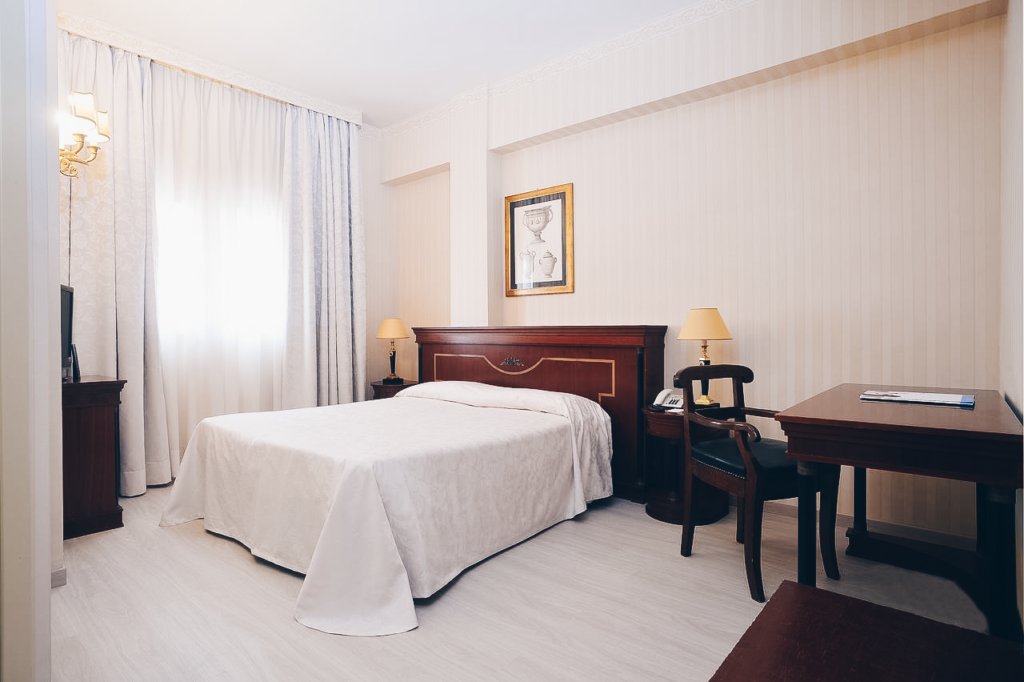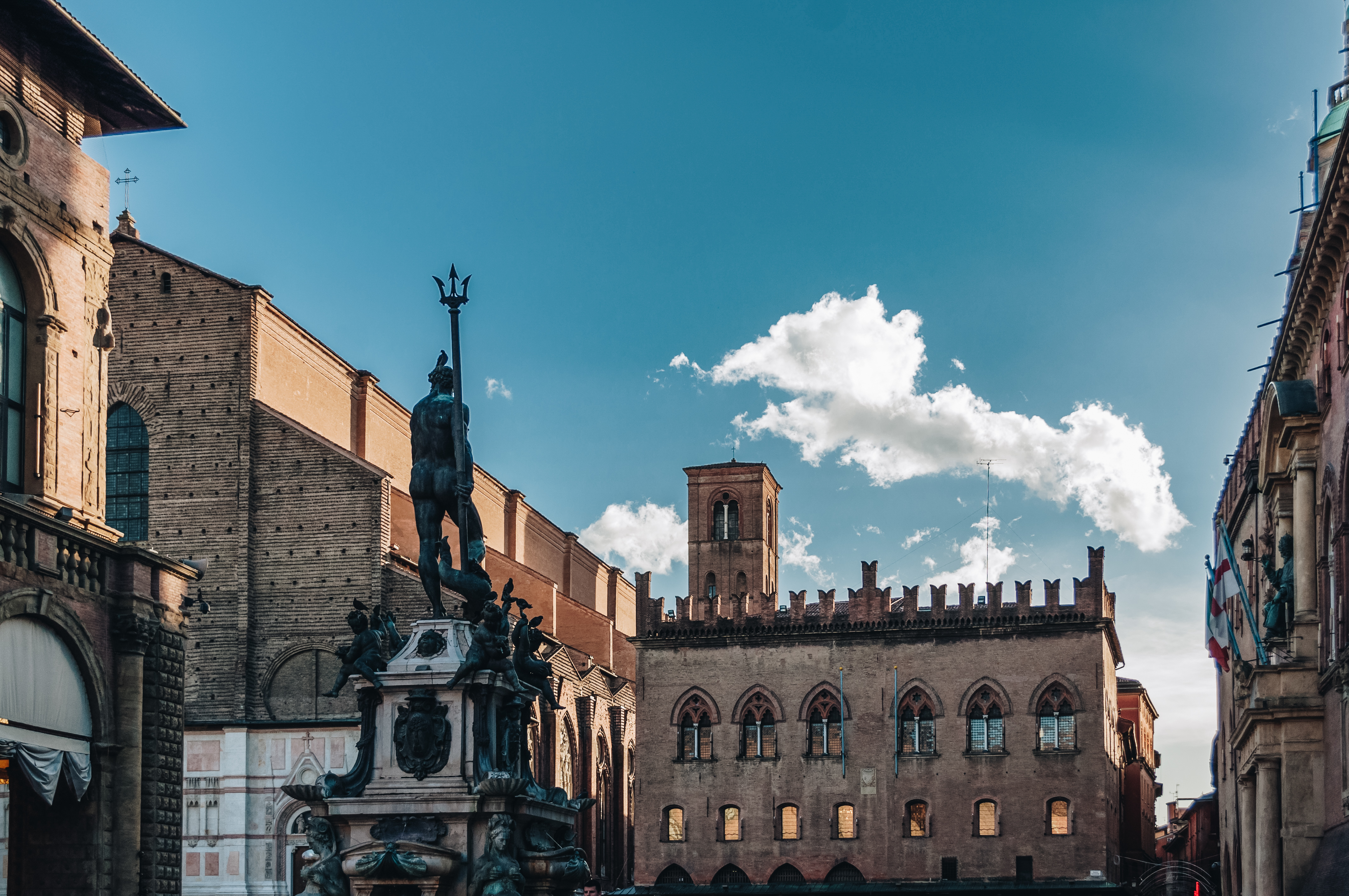It’s not every day that you get to unwind with a glass of Italian red and a plate of tortellini al brodo in the birthplace of it all. Bologna is the gateway to the fabled Emilia-Romagna region, synonymous with Italian gastronomy. It’s here that pasta is crafted with precision and care and served in delicate broths or under hearty sauces. While food is central to Italian culture, Bologna is more than just a destination for gourmands. It also offers myriad sights to explore at your leisure.
The city, built in the 6th century B.C. by the Etruscans, has seen its fair share of upheaval: from the Roman conquest to invasions by the Visigoths and Huns. Bologna was a papal stronghold for many years until the Napoleonic Wars but the seeds of Catholicism remain to this day. Shops and restaurants shutter on Sundays until the end of church services.
Bologna is the perfect city break destination, whether it’s just for a weekend or a whole week. Bologna welcomes tourists from all over Italy and beyond thanks to its culinary reputation. Restaurants and butcher shops, housed in brightly hued stucco buildings, vie for equal attention here. Archways and historic porticoes give way to expansive piazzas and streets. Stroll down cobblestone boulevards named after Italian literary giants until you discover an alley adorned with vintage style lamps and stone edifices. Breathe in the scent of sizzling meat, grab a Sangiovese and take a seat outside a restaurant. Eat, drink, relax, repeat. That’s the Bolognese way.
Getting to Bologna:
Traveling from Europe to Bologna is an excellent way to immerse yourself in the charm of Italy’s rich culture and history. There are various transportation options available to reach Bologna from different European cities, ensuring convenient and diverse travel experiences. Here are the top 5 train routes departing from major European cities to Bologna:
1.Train from Paris to Bologna (approx. 10 hours): TGV, Frecciarossa
2.Train from Barcelona to Bologna (approx. 6 hours): Renfe, Trenitalia
3.Train from Vienna to Bologna (approx. 7 hours): ÖBB, Railjet, Frecciarossa
4.Train from Berlin to Bologna (approx. 13 hours): ICE, Frecciarossa
5.Train from Zurich to Bologna (approx. 5 hours): SBB, Frecciarossa
These train routes offer not only efficient travel times but also the chance to enjoy picturesque landscapes and comfortable journeys as you make your way to the captivating city of Bologna. Whether you’re a history enthusiast, a food lover, or an art aficionado, Bologna has something to offer for every traveler seeking an authentic Italian experience.
You can read more about our top things to do in Bologna and where you can stay after a day of eating and sightseeing.
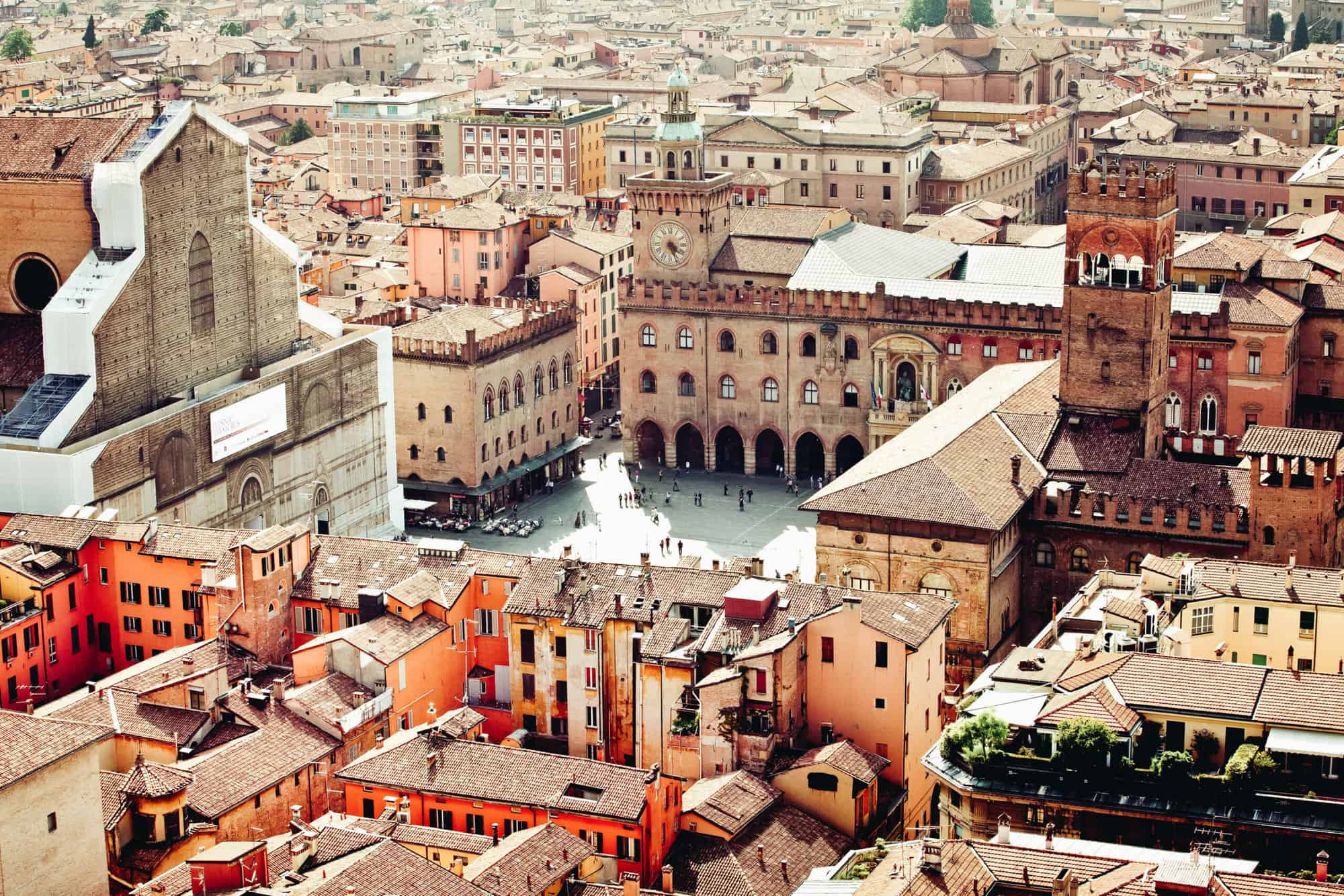
Where to Eat in Bologna?
To start any story about Bologna you have to talk about its classic cuisine. Tortellini, ring-shaped pasta filled with meat or veggies, was created here in the 1950s and here you’ll find the best places to savor it. Locals prefer the al brodo variety—pork-filled pasta bobbing in fragrant chicken broth. Eat it for lunch, dinner or as a snack in between.
Typical to the city, Ragu alla Bolognese, that fat-rich meat sauce made from a combination of beef and pancetta, tops everything from tagliatelle to tortellini to gnocchi but never spaghetti. True aficionados add milk to the recipe to insure a robust creaminess that adds density to the tomato-heavy topping.
Now where should you try Bolognese pasta?
Where does one even start in a city that prides itself on its culinary traditions? With a cafe, per favore!
The Bolognese start their day with a dose of coffee and croissants. Italians make the world’s best cappuccinos and espressos—there’s no question about it—and savoring a hot buttered croissant and perfect cappuccino in the morning starts your day off right. With small coffee shops and bars dotting the landscape, it’s hard to choose that one special place to have the dynamic duo. Naama Cafe, run by Turkish immigrant Tameer Saeed, is a coffee-cum-tea-shop smack dab in the center of town that boasts communal tables with colorful cushions and straw placemats. Waiters, garbed in black vests and white shirts, convivially greet patrons who choose from a variety of Italian classic mocha drinks, Middle Eastern teas and pastries. Hardwood floors dot the rustic yet colorful environs and the cappuccinos are as about as good as you can get anywhere else in Bologna.
Italians, like the Spaniards, take a rest during the day. Shops shutter and streets empty. Many locals head home, while others venture to bars or eateries for a cafe or snack. Eataly, that three-story gastronomic mecca that has outposts from Dubai to Rome to New York City to Chicago, is a temple to nourishment, whether the appetite or mind. The first floor is filled with books, from fiction to essays to travel guides. The second story is where you’ll find food, stall after stall of locally sourced semolina pasta in every shape, color and size. Prices are steep but the trattoria is a great place to dine on small plates such as bruschetta brushed with ricotta, pears, acacia honey and fennel. For a dose of champagne, head to the third-floor bar. Grab a book and savor the experience.
If you’re still in the mood for some classic drinks, Rosarose is just around the corner. Dozens of crystal chandeliers in a variety of shapes and sizes hang from the ceiling and large mirrors make the cozy room feel infinitely bigger. The bright red space caters to a well-heeled crowd seeking authentic spritzes, prosecco and local wine. It’s the perfect spot to wind down your day of pasta hunting.

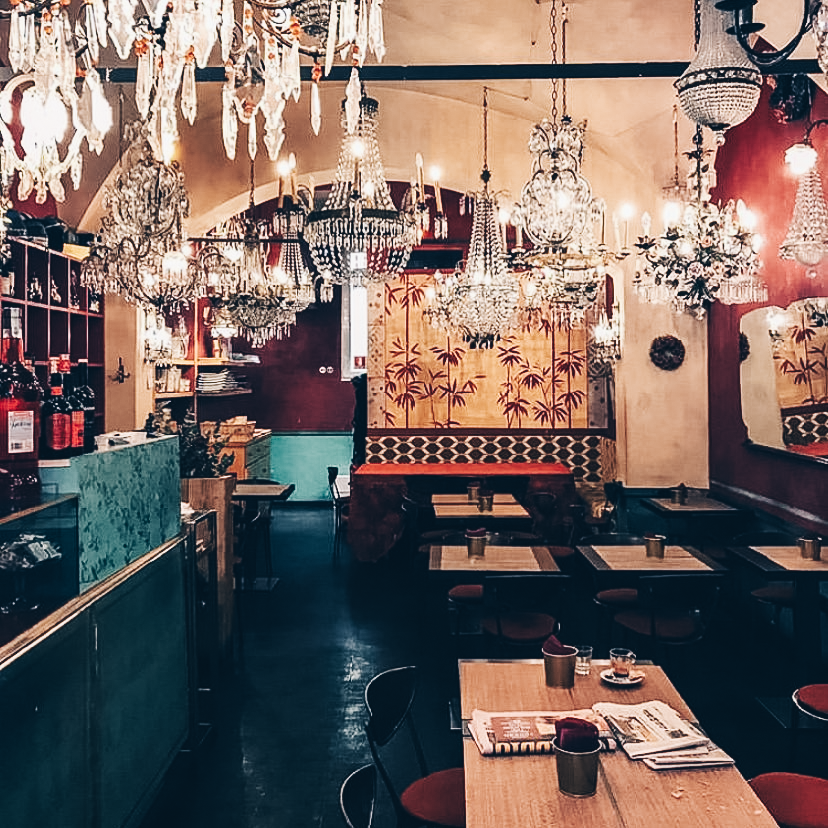

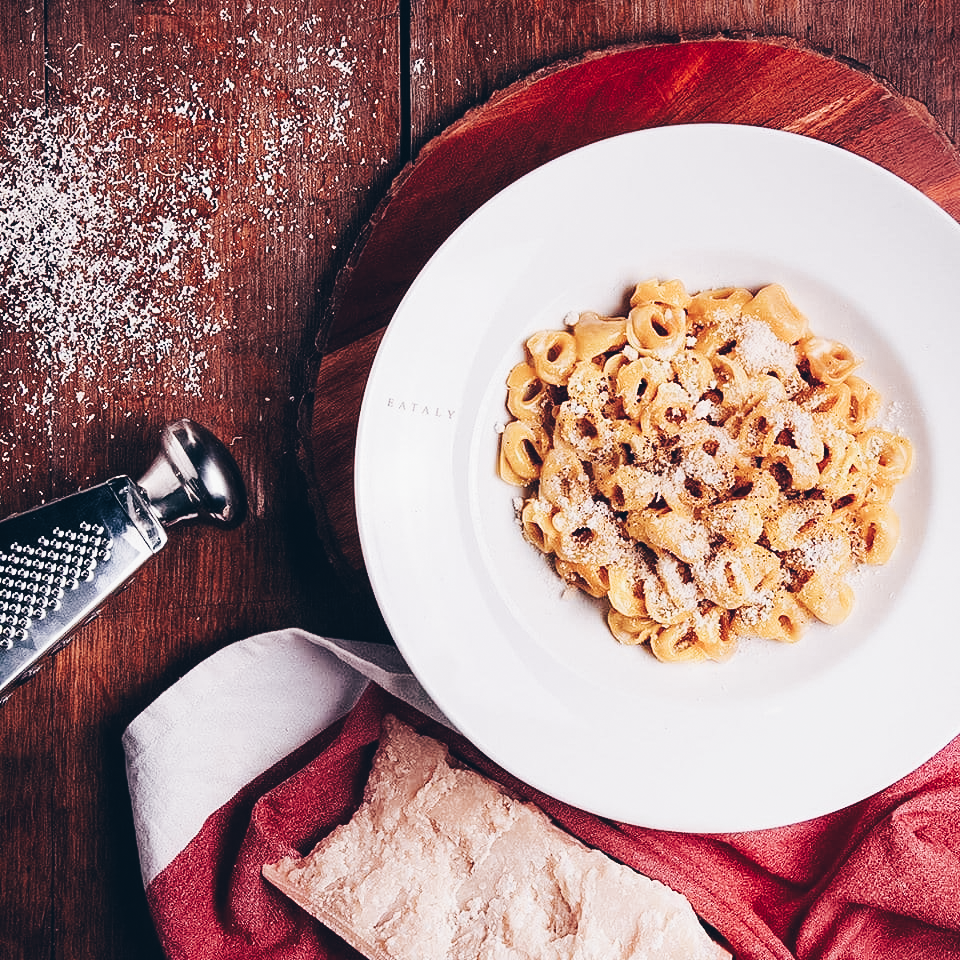
What to Do in Bologna?
Cemetery, one of the oldest in all of Europe and home to a monastery, to the Meloncello Arch and beThe city was a center of trade and commerce during the 12th and 13th centuries, and many of the buildings from this period remain to this day, surviving sieges and wars, both continental and world. Locals congregate at Piazza Maggiore and Piazza del Nettuno, two squares that sit side by side in the center of town. Piazza Maggiore features the unfinished San Petronio Basilica, which was supposed to rival St. Peters in Rome but was sadly never completed. The Palazzo del Podesta, currently a civic building, and Torre dell’Arengo, one of the oldest towers in Bologna, are worthy of a detour. Piazza del Nettuno, named for the Roman god of the sea, boasts a fountain to said deity. Here you’ll find young Bolognese milling about during the midday break before they return to school.
Since the 13th century, the medieval Palazzo Re Enzo near the Piazza Maggiore has been luring visitors to Bologna and with good reason. Inside this palatial palace, admire vintage photos of the city that harken back to a quieter time. Another impressive historic building is the Villa Aldrovandi Mazzacorati, a 17th century manse just outside of the city center. The Marquises Mazzacorati have owned the building since the late 1700s and built a small garden in front with water fountains. Inside, the Neoclassical villa boasts a theater, the only one of its kind from this period still intact.
The Basilica San Stefano, built on the ruins of a pagan temple, once housed seven churches but only four remain. Visit the tomb of St. Petronius, the patron of the city, at the Chiesa del Crocifisso. The three additional churches—Santo Sepolcro, Trinitá and Santi Vitali e Agricola—round out the compound with artifacts from Roman times.
Walk along the Porta Saragozza for a few miles and you’ll come across the Sanctuary of San Luca, originally built in the 15th century but reconstructed in the 18th. Situated on the Colle della Guardia just outside the main confines of the city, the shrine has long been a religious landmark of Bologna. Since 1433, a procession of worshippers and priests walk to the Sanctuary of San Luca, armed with a Byzantine Madonna and child. Head to the terrace of the sanctuary to admire panoramic views of the Emilia-Romagna countryside.
Bologna is known for its porticos (covered walkways) and you’ll find dozens throughout the city, even one long one with 600 archways on the way to the sanctuary. Walking tours are a great way to explore these UNESCO World Heritage Sites and stay in shape after eating all that delicious, rich food Bologna is known for. Start at Via degli Dei to admire the porticos on the way to San Luca sanctuary. Other porticos lead you from the Certosa Monumentale yond.
One of the most important porticoes, the Portico del Pavaglione, sits under the Archiginnasio, the birthplace of academia in Bologna, now home to the municipal library since 1838. Catholic Cardinal Borromeo commissioned the palace in the 16th century and it became the seat of the local university until 1803. Allied bombs damaged the building during WWII but it was rebuilt in the 1950s. Today you can climb various levels to admire the old classrooms and lecture halls.
Besides historic buildings, Bologna boasts a few solid museums featuring Renaissance art and more surreal modern works. The Pinacoteca Nazionale offers an array of masterpieces from local artists. Founded in 1808, the building was once a showcase for artists from the Academy of Fine Arts. More than 1,000 paintings from lesser-known artists such as Pseudo Jacopino and Vitale and the more famous Giotto abound. Explore the frescoes from the Santa Maria di Mezzaratta church or admire the Renaissance works of Francesco Francia, a relatively unknown painter and goldsmith who lived in Bologna in the late 1400s.
The nearby Casa Museo COVILI opened in 2019. COVID naturally halted the momentum of the opening of this new museum, but now that tourists are returning to Bologna, the museum, dedicated to the self-taught artist Gino Covili, a native son, will surely lure more people to Bologna. For more than 50 years of the 20th century, Covili painted in his own lively style, creating more than 100 works featuring almost surreal images of people doing the most mundane tasks. Explore his studio and workshop and grab a souvenir at the giftshop.
Medieval towers used to dot the Bologna skyline like skyscrapers dot the Manhattan skyline. From the 11th to the 13th century, dozens of towers were built in Bologna to protect the city from attack. The wealthiest Bolognese families inherited them–so to speak—from the city proper and built more over the years as a symbol of their influence and power. As these reigning families lost their power and as the city faced plague, strife, and war, the towers were relegated to second-class status.
Only 22 towers remain today in Bologna, from the Clock Tower to the Garisenda Tower. If you’re here on a short trip to Bologna and only have time to see one site, Le Due Torri offers a two-for-one extravaganza. These leaning towers, long in the shadow of the famous one in Pisa, were built in the 12th century and named for the families who constructed them. Ascend hundreds of wooden stairs to the top of Torre degli Asinelli for a bird’s-eye view of magical Bologna. Torre Garisenda, while smaller in stature, leans nearly 43 feet, making it a fun yet challenging climb.
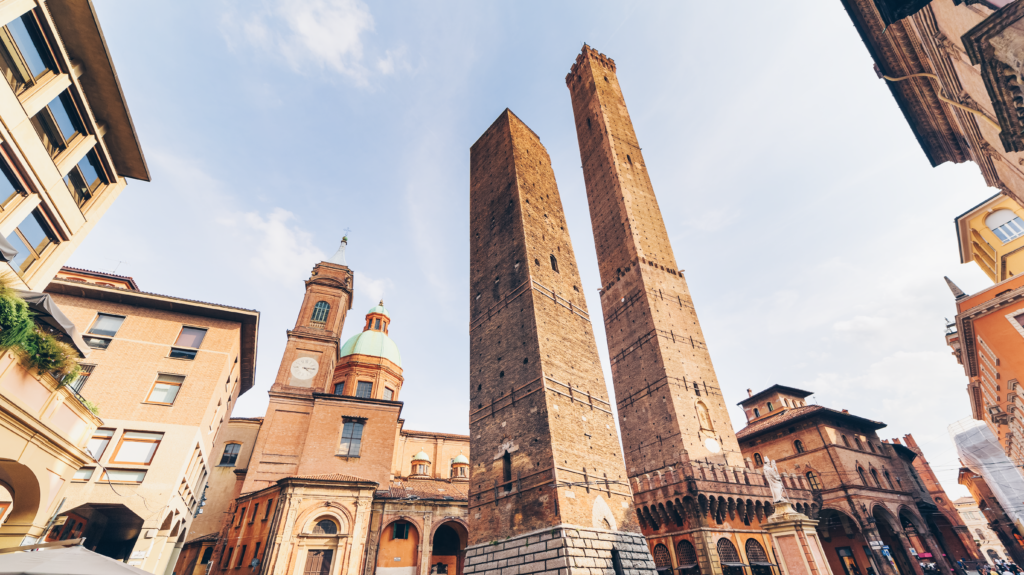
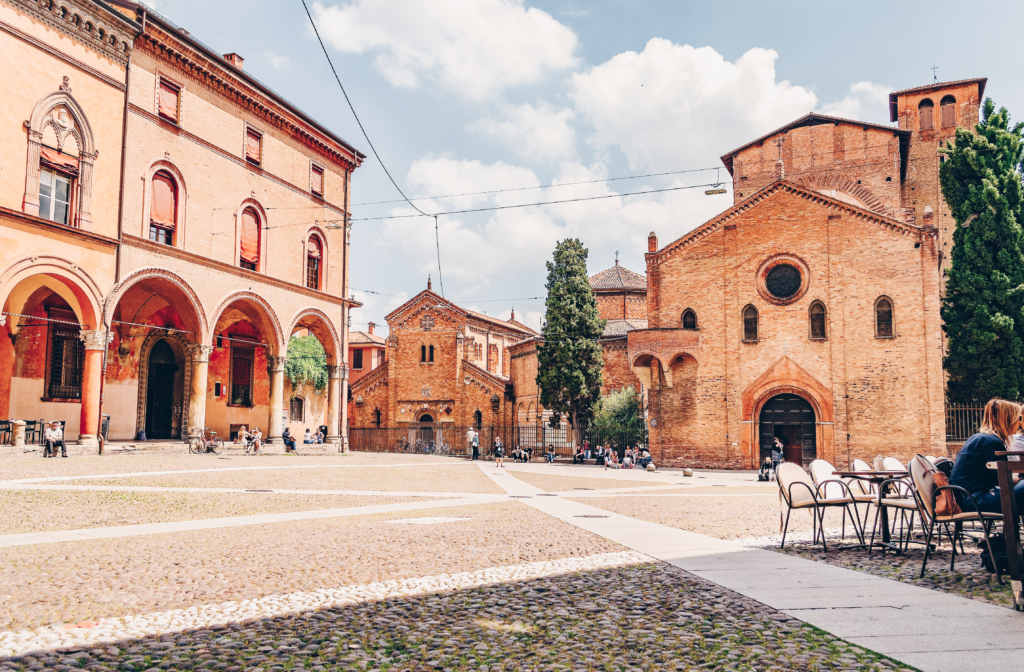
Where to Stay in Bologna?
Savhotel
Marrying luxury with tradition, the Savotel near Congress Palace boasts 120 rooms with all the necessary conveniences—think Wi-Fi, a cozy fitness center, meeting rooms and free bike rentals. Rooms feature dark parquet floors, neutral furnishings and expansive beds that you can sink yourself into. Large wardrobes, Nespresso coffee machines and Trussardi toiletries round out the amenities. The Nero Arancio restaurant features modern interpretations of classic Bologonese cuisine. Opt for the degustation menu if you want to splurge.


Zanhotel Europa
If classic Italian decor is more your style, the Zanhotel Europa in the city center personifies it to a tee. The pet-friendly, 101-room hotel boasts Neoclassical style, marble floors and chandeliers aplenty. Rooms feature brocade or damask bedspreads, dark wood furniture and striped wallpaper. Expect flatscreen TVs and bespoke bathroom amenities, too. Enjoy a hearty full breakfast in the dining room and if you suffer from allergies, the hotel can accommodate you in a special hypoallergenic room.
